Average Birding

Spring in Spain
Right. Enough waiting for the UK to warm up. It's off to Spain for some festivals and some birds.
This post covers events between April 15th and 25th, inclusive. Most of the birding happened in the Sierra de Aracena from the 18th to the 24th, mind...
First, a trip to Seville
One of our favourite places. To cap it off, it's also Easter, and so there's all manner of exciting Catholic events to keep us on our toes. In the sea of tapas, cañas and tinto de veranos, we find a little gap to go for a tour of the roof of the cathedral.
Now, here's a thing you should know about the cathedral: it's the only building pictured in the Collins. And for good reason - it's home to a substantial team of Lesser Kestrels (as well as Common Swifts, and even a few Parakeets here and there).
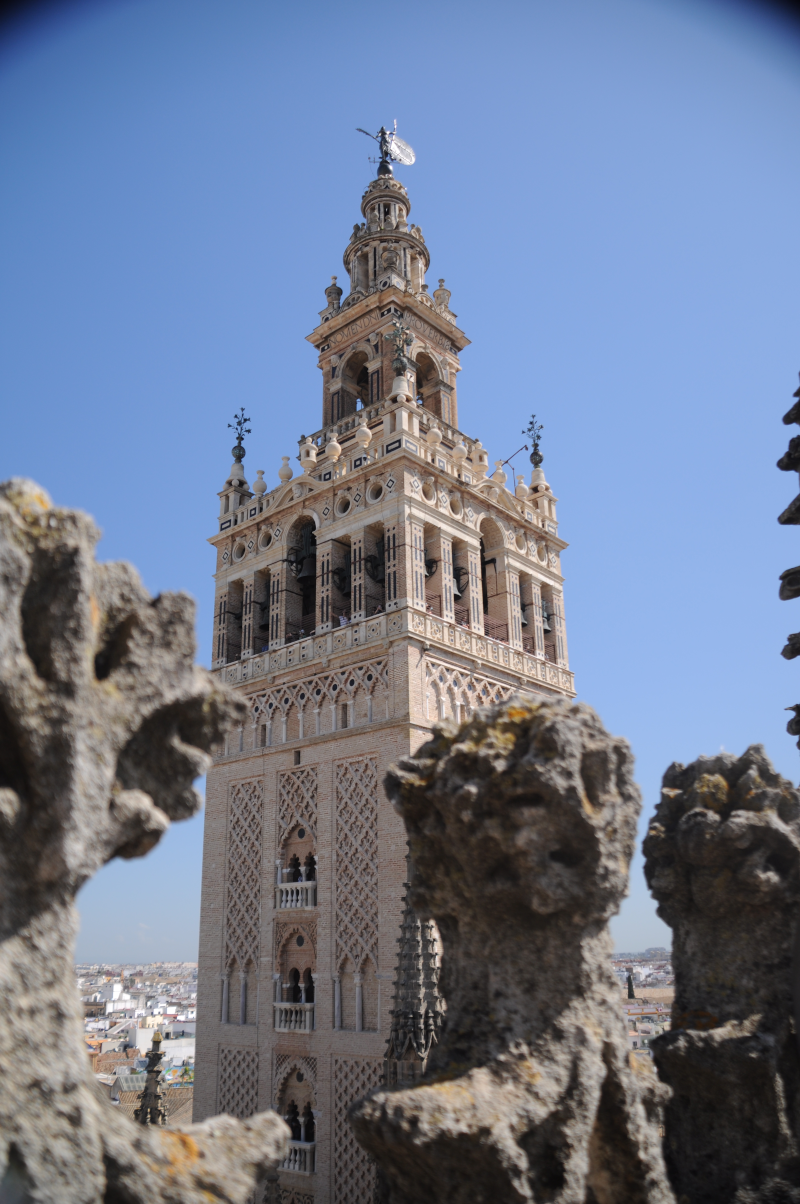
It's worth visiting the wikipedia page for this thing, particularly the Giraldillo (weathervane) on the top - it's a fascinating building.

Yet to manage a visit to Seville and the birds hawking above the cathedral doesn't bring a grin to my face. What an excellent place.
We're car free this holiday, so our opportunities to explore other sites nearby Seville is limited. Once the festivities of Easter weekend draw to a close, we get on a coach to Aracena, for a week of walking in the Sierra there.
Sierra de Aracena
Our first stay was in Galaroza. Or, so we thought - the place we'd booked was shown as in the town when we booked it, but on contacting the owners before arrival, it turned out it was actually here! Thankfully the owners (who were in general, wonderful) were able to come and pick us up; we'd have just about managed to lug our kit up the hill, but it was nice not to.
All three of hosts/accommodation/associated dog (enormous!) here was excellent. More details here.
Consulting our walk map, we discovered we were already on at least a couple of the routes. A quick evening sortie on day one found us Redstart, Cirl Bunting, Serin and Nuthatch within very short order; how very exciting!

Our itinerary for the next few days is simple: get up; walk to a place for breakfast, walk to a place for lunch (or to a place to eat a sandwich), walk to a place for dinner, walk home (optional evening walk).
The terrain is reasonably consistent, lots of hilly Oak woodland - this is where the pigs that go into Spain's finest jamon grow up. The woodland density is really the only thing that changes; it rarely goes full on forest, but it varies between the borders of that and a few emptier scrubbier areas.
Day one
On day one, we go via route 19 up to Castaño de Robledo, then head to Jabugo, and then back to Galaroza via sections of route 17. We'd highly recommend a visit to Castaño; plenty of activity on the edges of town, a beautiful square, with excellent food and drink. Would struggle to recommend more than a drive by visit to Jabugo. Galaroza is lovely.
Bird wise, it quickly becomes clear that this is going to be another Chaffinch heavy trip; via the medium of birdnet we realise just how varied their calls can be!
Day two
Route 20 to Fuenteheridos, followed by route 22 to Cortelazor, and then a bit of improvisation taking us back to Galaroza via Navahermosa. An excellent walk. An epic sandwich in Cortelazor.
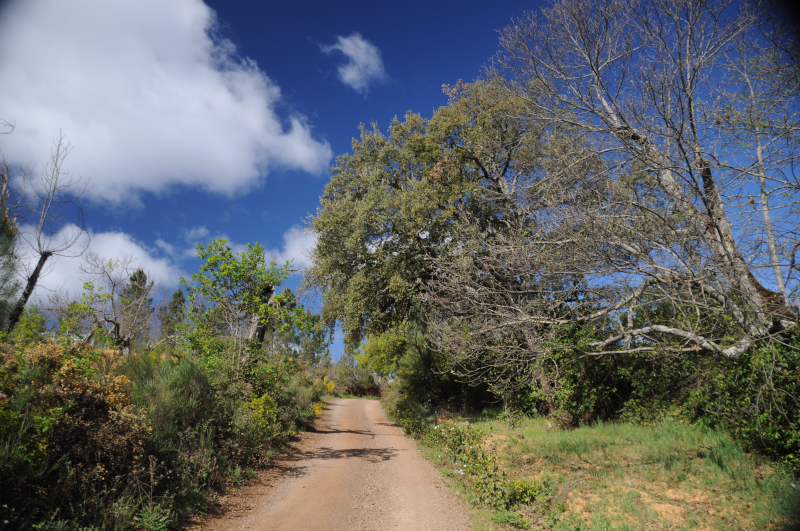
Better birding - the sun came out and things were less shy.
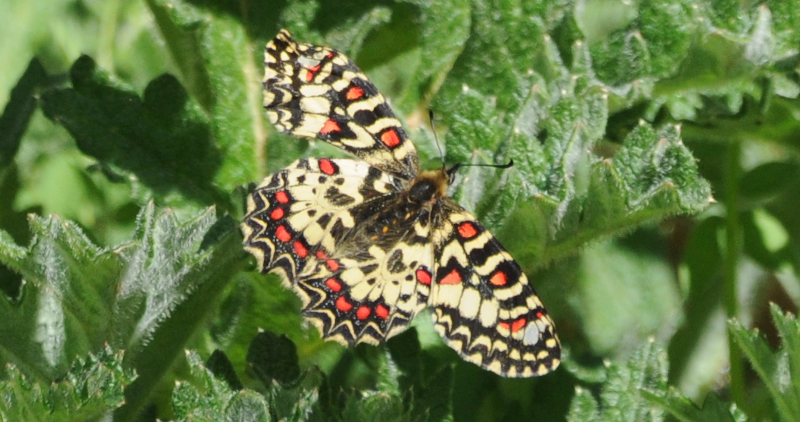
We saw Redstarts across the day and struggled to get good shots of them. As we climbed over a lump from Navahermosa to Galaroza though, one put on a show for us...
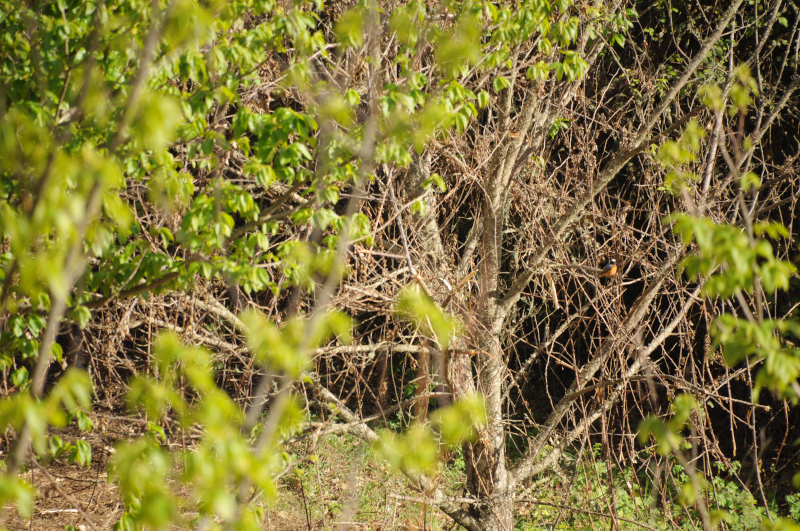

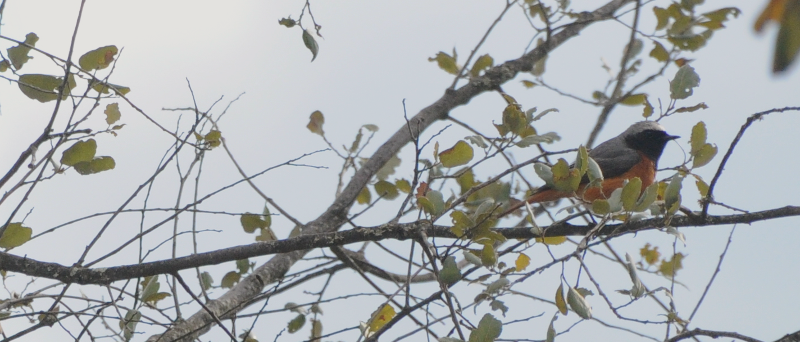
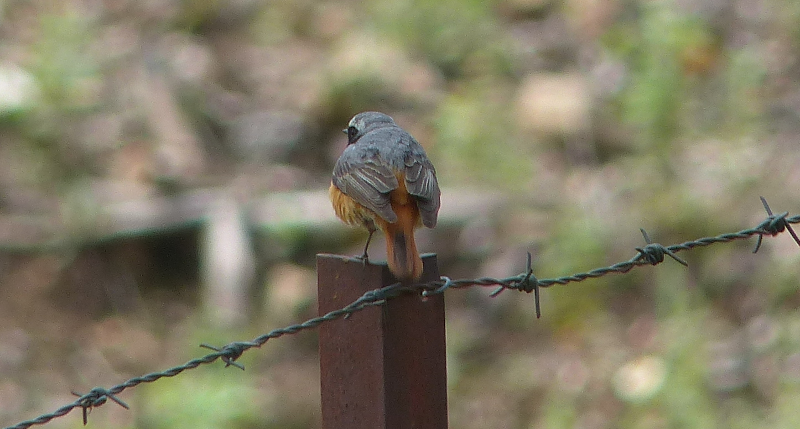
Day three
Changeover day: our hosts in Alájar pick up our luggage, we walk to Alájar via routes 21, 16, and a little short cut via the mirador took us into the town.
We got our first look at a Lesser-spotted Woodpecker (a much commoner bird here than in the UK) on the way over.
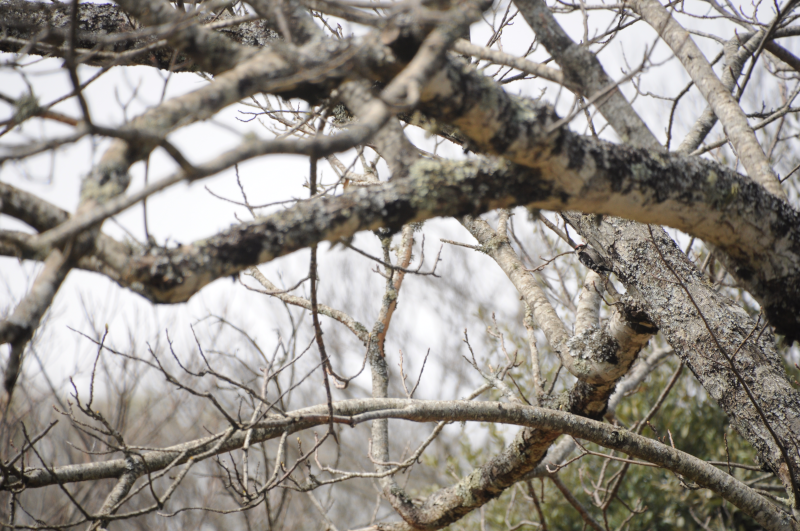
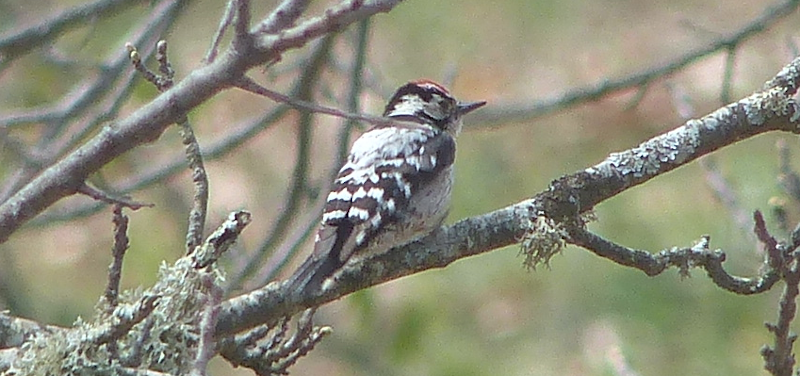
We also came across a co-operative Serin on the way over.

Day four
Our new hosts at Posada San Marcos are also excellent, and their knowledge of the locality is excellent. They are mildly judgemental of our map, and their advice in addition to its routes on where to go was excellent.
Our first day is a bit of a washout though: it starts raining overnight and just won't stop. Water pours off the nearby hills into town; this is, according to Ángel, pretty standard. We have a read of a few of the books in the library, and then, spotting a gap in the weather, decide to have a walk to Los Madroñeros early afternoon.
This starts off well - the weather seems to have grounded a number of Spotted Flycatchers; we see five or six in the next hour and none for the rest of the trip. Shortly after reaching Los Madroñeros, though, the sky opens again, and we realise we have made a grave error in venturing outside at all. This is one of those times where the distance between waterproof and water-resistant really comes to the fore, and it turns out our coats and bags are the former, but our shoes are the latter. Thankfully our bins and cameras survive the damp without incident; it's a bit of a battle to get things dry enough for day five though!
Day five
Alajar -> Linares -> Aracena and back, via Los Madroñeros.
Weather still recovering for yesterday's rain.

The sun did eventually make it out, and warmed up things up enough that we found this mysterious tangle of snake-eating-lizard:
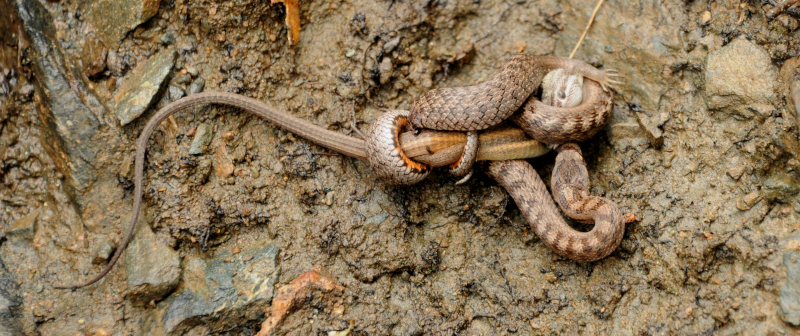
We had big plans to visit the caves in Aracena, but it involves queueing, booking and generally far higher levels of organisation than AB1 can stomach right now, so what actually happens in Aracena is we mooch about for a bit, get rained on a bit more, enjoy a pleasant lunch and marvel at how much more touristy Aracena is than places a few minutes drive away are.
On the way back the weather is all over the shop, but thankfully the rain remains quite light. A nightingale or two turn up to serenade us, but don't show well enough for a photo.

Coming back into Linares, we also manage to get a lens or two on one of the several Firecrests that we've seen.
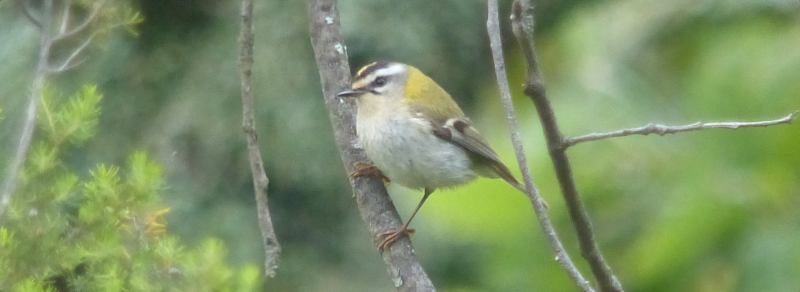
There's no trace of the lizard/snake confusion as we march back to Alajar. Just before we get there, our ears tell us something new is about, and while we can't find it, Birdnet is super confident it's a Rock Bunting.
Day six
Our last day. Sniff. We head out on a host recommended walk to a nearby waterfall, with an intention to return via our favourite square in Castaño de Robledo.
The walk West out of Alajar is mostly dominated by very excitable dogs. This gets tedious after dog three or four, and we stop counting at fifteen. We guess that having a guard-like dog when you're in the sticks is a reasonably common security method. Or perhaps folks around here just like dogs.
We don't see a lot of birds - our constant friend the Common Redstart pops up now and again though, and that does us very nicely.
We eventually reach the reason for this walk - Los Chorros de Joyarancón o Cascada de Jollarancos - there's an excellent waterfall and a pleasant, climbing Sendero up to a place to view it. Along the way we're accompanied by scurrilous Sardinian Warblers. They are reasonably co-operative until a camera points at them, at which point they disappear without trace.

The waterfall is worth the walk - it's only a shame that having got to the viewpoint, the path stops - we have to retrace our steps down the hill a bit before taking a left turn towards Castaño again.
The walk up the hill is nicely taxing - further _sylvia_s sing us up it in no time though. As the path switches from sparse shrubby trees into conifers, we pick up a Firecrest or two - they're far less shy than in the UK here!
It's when we get near Castaño that we hit the jackpot though.

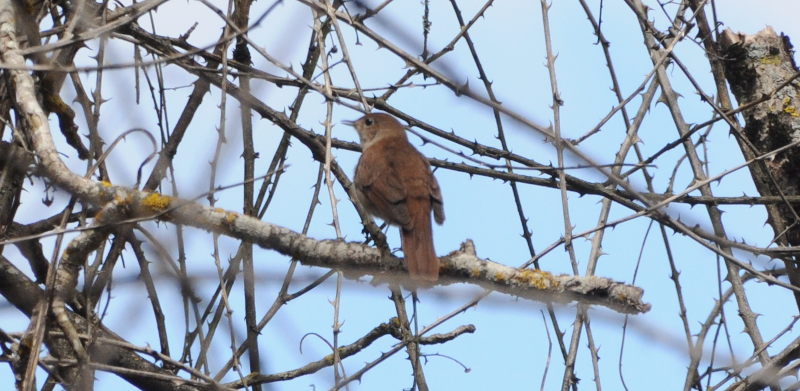
We stopped for an extended lunch in Castaño; which was a popular choice - the square was packed! Somewhat later, and at a lower pace, we ambled back to Alajar. Few birds were seen - definitely into bird siesta hours for the duration.
Day seven
Back to Seville, to go home. We have time for a quick trip to look at the Kestrels again, but then it's time to head to the airport. What an excellent trip.